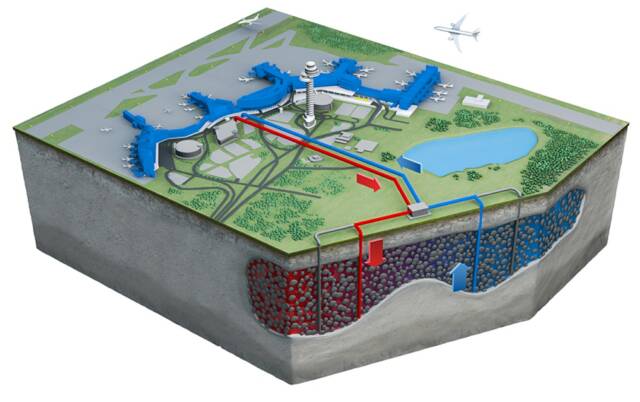Geospeicher.bw - Geothermische Speicherung in Baden.-Württemberg, Teil 1
- Contact:
Prof. Dr. Ph. Blum, Prof. Dr. I. Stober, M.Sc. P. Fleuchaus
- Funding:
Baden-Württemberg Programme
Funding No.: L75 16014
- Partner:
University of Heidelberg, University of Stuttgart, Biberach University of Applied Sciences, Offenburg University, EIFER, Stadtwerk am See GmbH & Co. KG, Stadtwerke Bad Waldsee GmbH, Stadtwerke Hockenheim, e.wa riss GmbH & Co. KG
- Start date:
19.09.2016
- End date:
18.09.2019
While the percentage of renewable energies is increasing worldwide, less attention is paid to the decarbonatization of the heating and cooling sector. Half of total world final energy consumption is attributed to the thermal energy sector, with three-quarters produced from fossil fuels (IEA 2015). To achieve the ambitious goal of COP21, Thermal Energy Storage (TES) has attracted increasing attention. TES are considered to tackle the short- or long-term mismatch between thermal energy demand and supply. In Aquifer Thermal Energy Storage (ATES), heat and cold is seasonally stored in the subsurface through injection and withdrawal of groundwater (Fig. 1).

Figure 1: ATES at the Arlanda Airport (Stockholm). Heat and cold is seasonally stored in an aquifer. During summertime, the stored cold is used for comfort cooling. In wintertime, the stored heat is used for heating ventilation and for snow melting at the runway (Wigstrand 2009).
Worldwide, there are currently more than 2,800 ATES systems in operation. However, more than 90% of all systems are located in the Netherlands and Sweden. Although 70% of the German subsurface is suitable for ATES application, only 3 ATES systems are currently in operation. The collaborative project Geospeicher.bw aims at the implementation of 3 pilot projects in the state of Baden-Württemberg to demonstrate benefits and potential of ATES application both on regional and national level. 1 high temperature and 2 low-temperature ATES systems are planned in:
- Hockenheim: interseasonally storage of waste heat of a swimming pool for winter heating (storage depth <50 m).
- Karlsruhe: shallow ATES system to provide heating and cooling for the Campus North of the KIT (storage depth <50 m).
- Friedrichshafen: high temperature ATES to store industrial waste heat for the supply of a district heating system (storage depth >50 m).
The interdisciplinary character of the project Geospeicher.bw is expressed by a close collaboration of 5 universities from different fields. The joint research activity addresses geochemical, geological, socio-economic and building-technology related issues.